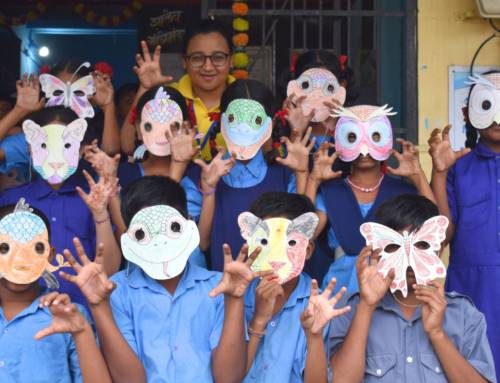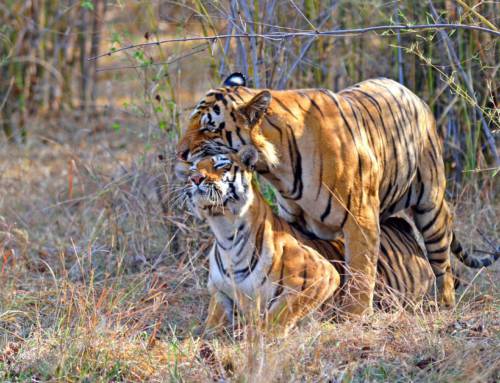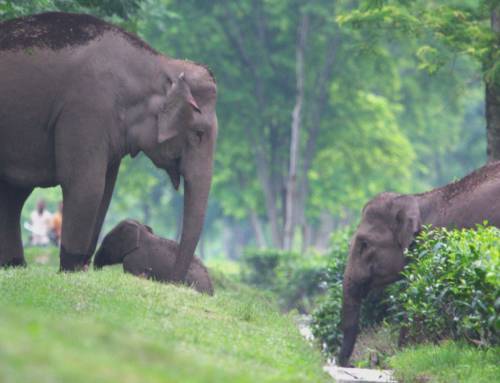Research Article: Carter, H., Gomez, C., Ray, S., Lepard, C., Mutinhima, Y., Sibanda, L., … & Dickman, A. (2025). Hopes and Fears for Incentivising Coexistence With Big Cats Through Innovative Market‐Based Financial Mechanisms. Wildlife Letters.
Blog Author: Shashank Dalvi
Key Highlights:
- A recent study sheds light on the daily challenges faced by people living close to big cats like tigers and lions.
- Researchers suggest that communities should receive fair compensation or support for coexisting with wildlife.
- Such support can help improve livestock safety and reduce human-wildlife conflict.
- The study cautions that excluding local voices can lead to ineffective or even harmful outcomes.
- True conservation success depends on fairness, inclusivity, and building long-term trust with local communities.
From the majestic roar of lions on the African savanna to the silent, shadowy prowl of tigers in Asia’s forests, big cats capture the imagination of wildlife lovers and casual observers alike. But for the people who live alongside these animals every day, the experience is often far less romantic. Livestock losses, fear for personal safety, and economic hardship often pit local communities against wildlife. Conservationists have long grappled with this dilemma: how can we make living with big cats worth it for the people who share their space? A group of researchers from Oxford, CWS India, Zimbabwe, and the U.S. believe part of the answer might lie in something unexpected – finance.
Their recent paper in Wildlife Letters explores the emerging world of biodiversity credits and conservation impact bonds. In essence, these are financial tools designed to reward people for protecting nature. Think of them as eco-investments: if wildlife thrives, investors see a return, and communities receive financial support for conservation-friendly behavior.
Sounds promising, right? It is, but it is far from simple.
We are facing a global conservation funding crisis—hundreds of billions of dollars short each year. Big cats, as iconic and ecologically important species, are prime candidates for attracting funds. New mechanisms like Rhino Bond have already raised millions for rhino protection, and similar models are being developed for lions and wild dogs. Done right, these mechanisms could provide communities with direct incentives for conservation, support conflict prevention, like building predator-proof fences, and most importantly, create long-term economic value for living with, rather than against, predators.
It’s a potentially game-changing approach that shifts conservation from charity to investment.
The authors of the paper are optimistic about the potential of these financial tools in conservation, but they’re also cautious. They raise important questions that strike at the heart of how these mechanisms work: Who decides what gets measured? Who benefits from the money? And what happens when things don’t go as planned?
One major concern is the risk of excluding Indigenous Peoples and Local Communities (IPLCs), who are often most directly impacted by big cat conservation. The systems behind biodiversity credits and conservation bonds are often technical, bureaucratic, and opaque, creating barriers to meaningful involvement. If these communities are not genuinely included from the beginning, there’s a danger that conservation efforts could alienate and disempower the people they are meant to benefit.
Another issue lies in how success is defined and measured. If the focus is simply on increasing the number of lions or tigers, we risk oversimplifying the complex ecological systems these species are part of. In the worst-case scenarios, such narrow metrics could even create incentives for unnatural management practices, like confining animals in controlled spaces just to boost numbers, a far cry from the dynamic, balanced ecosystems conservationists aim to protect.
And then there is equity. Those who face the greatest challenges living alongside big cats, often those with the fewest resources, should be the ones who benefit most from conservation finance. Yet, too often, funds are siphoned off by those with more power, leaving the real costs of coexistence to be shouldered by the most vulnerable.
So, where does this leave us? Market-based conservation isn’t a perfect solution, but it’s not something we can afford to ignore either. As biodiversity bonds and credits gain traction, conservationists have a crucial role to play, not just as observers, but as active participants in shaping them. That means advocating for stronger standards that ensure both fairness and ecological integrity. It means ensuring local voices help steer the process, and that financial benefits reach the communities who live with wildlife every day. And it means investing in trust, relationships, and long-term collaboration, not just short-term contracts.
Ultimately, as the authors emphasize, the challenge is not only to measure nature but to truly value it.
Protecting big cats isn’t just about saving iconic species. It’s about rethinking how people and wild animals can live side by side in a rapidly changing world. These new financial tools could either become bridges to coexistence or barriers that deepen conflict. The difference will come down to how we design them, who we listen to, and whether we’re willing to lead with care, clarity, and courage. With thoughtful planning, real community engagement, and strong conservation leadership, we just might chart a better future for people, predators, and places they both call home.
To access the original article, click here.
Keywords: biodiversity finance, carnivores, coexistence, conservation, conservation impact bonds




